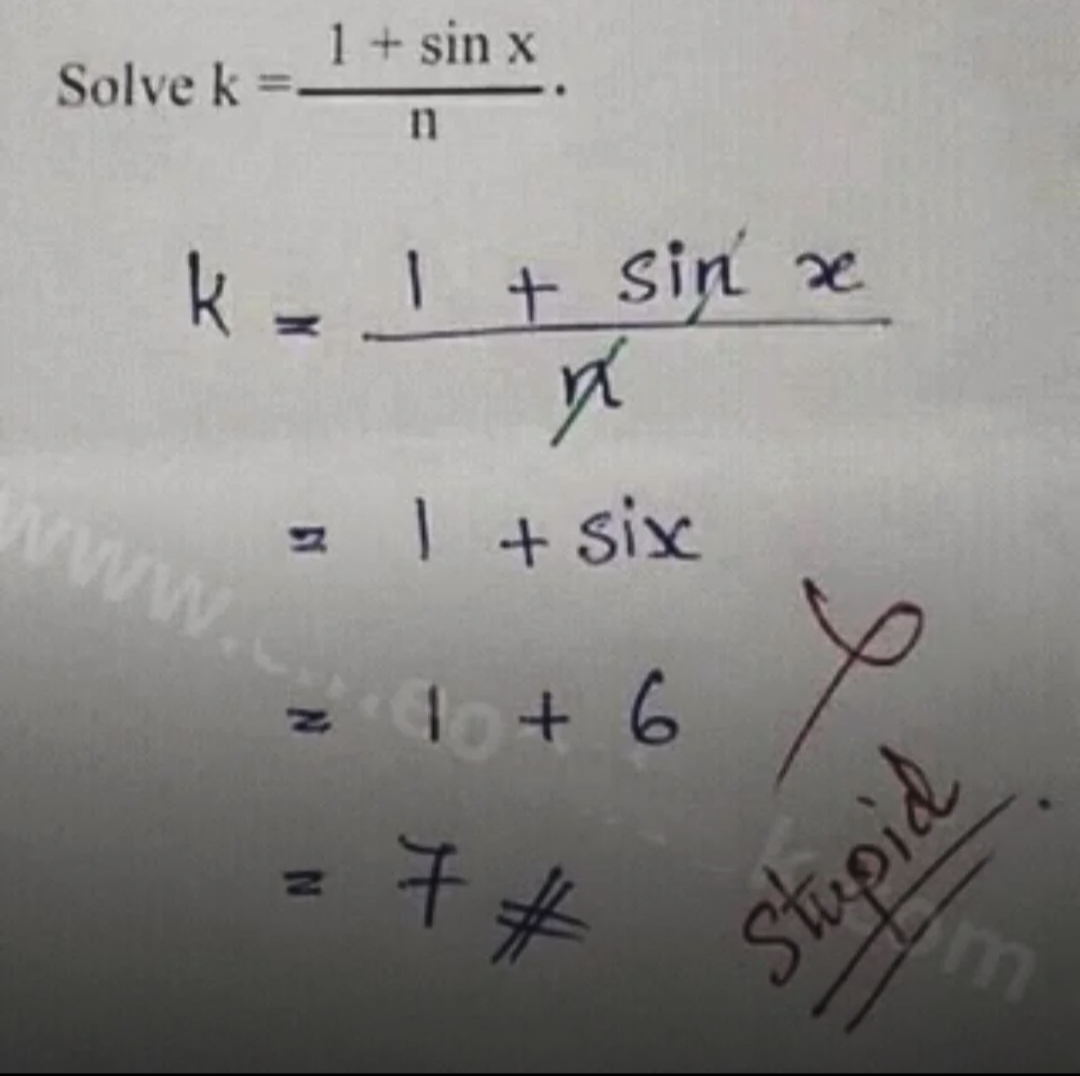this post was submitted on 19 Sep 2024
365 points (92.1% liked)
Funny: Home of the Haha
5680 readers
434 users here now
Welcome to /c/funny, a place for all your humorous and amusing content.
Looking for mods! Send an application to Stamets!
Our Rules:
-
Keep it civil. We're all people here. Be respectful to one another.
-
No sexism, racism, homophobia, transphobia or any other flavor of bigotry. I should not need to explain this one.
-
Try not to repost anything posted within the past month. Beyond that, go for it. Not everyone is on every site all the time.
Other Communities:
-
/c/[email protected] - Star Trek chat, memes and shitposts
-
/c/[email protected] - General memes
founded 1 year ago
MODERATORS
you are viewing a single comment's thread
view the rest of the comments
view the rest of the comments

But why?
See, I was taught this, but no one could every answer why sine and cosine worked the way they did.
This definition just explains how they work with triangles. What's the actual definition of each, and how was that derived? I can apply them all day long yet I still can't tell you what either one means.
I had the same issues with different kinds of equations, no one ever explained why you'd do a certain thing in a given step (e.g. Quadratic) even when I asked, repeatedly. The answer was always "you just do". Well that doesn't help with knowing when to apply a rule.
And that was my experience with any math, right through college (3 universities). Most teachers suck, but holy shit math teachers are down right moronic. They can't understand why students don't get it. Well, try actually teaching something for a fucking change.
Look up a diagram of a cosine and sine functions as they relate to a rotating circle.
E.g.: https://upload.wikimedia.org/wikipedia/commons/3/3b/Circle_cos_sin.gif